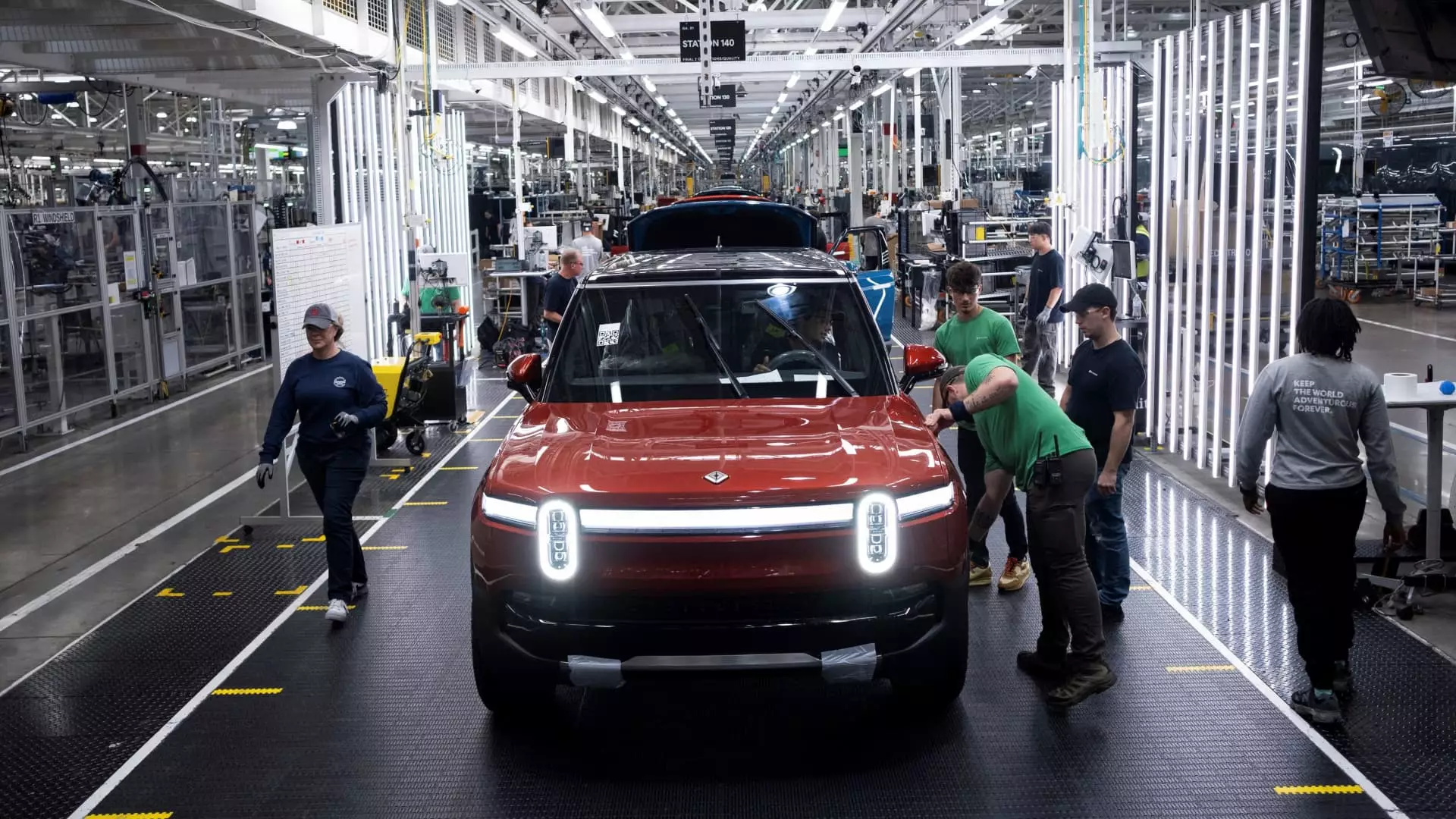Rivian Automotive, an ambitious player in the electric vehicle (EV) market, recently faced a considerable setback as it lowered its earnings forecast for the year. This move came on the heels of dismal third-quarter performance, which fell short of Wall Street’s expectations across key financial metrics. The company’s struggles, particularly in revenue generation and production, raise critical questions about its long-term viability and strategic direction.
In the third quarter, Rivian recorded a loss per share of 99 cents when adjusted, compared to an anticipated loss of 92 cents. Revenue figures also disappointed, coming in at $874 million against a forecasted $990 million. Such substantial misses indicate deeper operational issues that could tarnish investor confidence. Rivian’s adjusted earnings before interest, taxes, depreciation, and amortization (EBITDA) are now projected to be between a loss of $2.83 billion and $2.88 billion, significantly worse than the prior estimate of a $2.7 billion loss. This revised outlook paints a worrying picture, particularly as the company grapples with costs that continue to escalate.
Despite the grim financial results, Rivian remains steadfast in its commitment to achieving a “modest positive gross profit” in the fourth quarter of 2023. CEO RJ Scaringe emphasized the company’s core focus on driving profitability during a recent CNBC interview, stating that aiming for a positive gross margin remains a crucial objective. This assertion is particularly important in a highly competitive sector where maintaining investor interest often hinges on profitability metrics.
With a negative gross profit of $392 million in the third quarter, though an improvement from the $477 million loss the previous year, Rivian’s ability to pivot from losses to growth will be closely scrutinized. Financial analysts have indicated that maintaining this gross profit target may help stabilize the stock in the wake of disappointing earnings.
Year-on-year comparisons reveal a narrowing of net losses for Rivian, which dropped to $1.1 billion from $1.37 billion in the same quarter the previous year. However, revenue remains a major concern; the 34.6% drop in revenue, comprising $8 million from sales of regulatory credits, underscores the impact of supplier disruptions on production capabilities. Scaringe’s commentary on these challenges as a “short-term issue” suggests optimism, yet sustained problems could erode this sentiment over time.
On the trading front, despite initial declines following the release of earnings, Rivian shares saw a modest 2% increase in after-hours trading. Analysts believe this reaction reflects market relief that the company did not retract its gross profit target, hinting at potential value for investors moving forward.
A significant aspect of Rivian’s challenges lies in its production capacity. The company revised its annual production target from an ambitious 57,000 units to a more realistic range of 47,000 to 49,000 units. These adjustments are primarily attributed to ongoing supplier disruptions strategically linked to launching the second-generation R1 vehicles, whose redesign entails extensive changes to internal components. Given that production numbers directly correlate with revenue potential, Rivian must address these issues robustly to avoid being outperformed by competitors in the EV segment.
In an effort to bolster its capabilities, Rivian recently announced a noteworthy strategic partnership with LG Energy Solution, aimed at facilitating the supply of U.S.-manufactured battery cells for its upcoming R2 vehicle line. This collaboration signifies a proactive step toward mitigating supply chain vulnerabilities, a critical hurdle that electric automakers face, especially in the context of rising demand for EVs.
Rivian Automotive finds itself at a pivotal juncture. While the company has made strides towards recovering from its financial setbacks, the road ahead remains fraught with challenges, from production disruptions to investor skepticism. Its commitment to maintaining profit margins and forging vital partnerships may play a crucial role in shaping its future trajectory. However, to regain market trust and establish itself as a leader in the competitive electric vehicle landscape, Rivian must not only address its current operational woes but also demonstrate a sustainable path toward profitability and growth.

